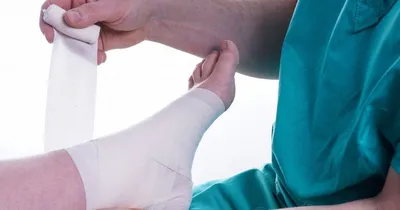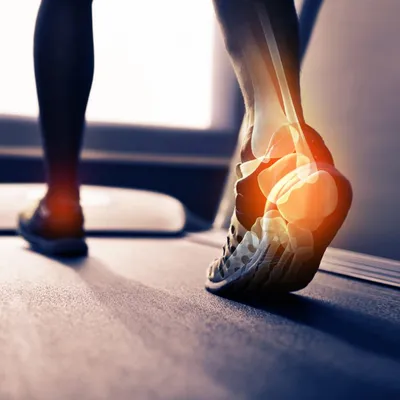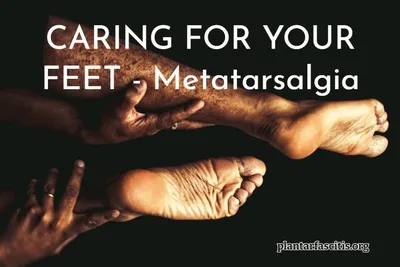Common Causes of Foot Pain When Walking
Plantar fasciitis
The condition affects the plantar fascia, a large band-like ligament that stretches from the heel to the toes. Inflammation of this tissue causes foot pain while walking, standing, or running. It may cause a painful ache in the heel or an uncomfortable bruise on the bottom of the foot
. The condition may also develop because of other conditions, including obesity, diabetes, or overuse injuries.
In most cases, plantar fasciitis resolves spontaneously with rest, but surgery may be necessary in about five percent of cases. Although surgery has a good track record for treating plantar fasciitis, the results are not always predictable. Treatments for this condition vary, from rest to anti-inflammatory medication.
Patients should seek medical attention if symptoms do not subside within 12 weeks. If symptoms persist after two months of conservative treatment, a doctor may recommend steroid injections to reduce inflammation and speed up recovery.
Your healthcare provider will perform a physical exam and note your medical history. During the examination, your healthcare provider may note any tingling or loss of feeling in your foot. If you are experiencing pain while walking, the healthcare provider may ask you about the pattern of your foot pain. If you answer yes to any of these questions, it could be a sign that your condition is affecting your daily activities.
Patients with plantar fasciitis often experience stabbing pain in the heel area when walking or standing. Symptoms usually go away as soon as you move, but may recur after standing or sitting for prolonged periods. In this case, your foot may feel stuck in a “claw-trap” position. Fortunately, there are several simple treatment options available. If you have foot pain due to plantar fasciitis, you should consult a doctor to get treatment.
Achilles tendonitis
You may have Achilles tendinitis when you feel pain in the heel or foot while walking. This condition can lead to more serious complications. The condition can degenerate, resulting in an enlarged tendon and nodules in the affected tissue. A physical exam and imaging modalities may be necessary to diagnose the condition.
Treatment may include immobilization or physical therapy. Immobilization helps reduce force through the Achilles tendon, which can reduce pain.
There are two types of Achilles tendinitis, which can occur simultaneously or separately. Noninsertional tendinitis affects the fibers on the middle portion of the tendon, causing tiny tears and swelling. This type of Achilles tendinitis tends to occur more frequently in younger people, while insertional tendinitis affects the lower portion of the Achilles tendon, which attaches to the heel bone.
An overuse injury to the Achilles tendon occurs when repetitive stress is placed on it over a short period. Adding too much distance to your walking or running program can cause an overuse injury. Additionally, Achilles tendinitis is more common in people who do not have sufficient calf muscle flexibility. Overuse injuries also may result from the frequent use of high-heeled shoes and walking on hilly terrain.
Treatment options for Achilles tendinitis include physical therapy and braces. Braces and arch supports can provide additional support for patients with flat feet. Additional treatments include extracorporeal shock wave therapy, platelet-rich plasma injections, and braces. Patients may undergo surgery to repair the damaged tendon for more serious cases. This procedure is not appropriate for every patient, but it is very effective in the early stages of the condition.
Metatarsalgia
Although the underlying causes for metatarsalgia are not clear, there are several steps you can take to alleviate the symptoms. In many cases, conservative measures such as wearing properly fitting footwear can relieve foot pain. If symptoms are severe, a surgical procedure may be required. Your physician will determine the best course of treatment for your specific case. If conservative measures are not enough, your doctor may recommend physical therapy.
Common causes of metatarsalgia include excess weight and improper shoes. Shoes with high heels and those with a narrow toe box can increase the risk of developing foot pain. Also, wearing shoes with poor arch support or athletic shoes with no padding can aggravate the condition. Stress fractures in the metatarsals are another common cause. These injuries cause your foot to shift its weight forward, causing pain.
Overuse of the foot may also cause metatarsalgia. The metatarsal bones are the bones that connect your toes and ankle. The bones can cause pain in the ball of the foot and can even lead to deformities. High-heeled shoes and foot deformities can also cause this condition. While medical treatment may be necessary, home remedies and lifestyle changes can help relieve pain and discomfort.
In most cases, metatarsalgia is caused by something that damages the long bones of the foot, called the metatarsals. In addition to being the most common cause of foot pain, metatarsalgia can also result from improper footwear, arthritis, or other foot conditions. A doctor can treat metatarsalgia to prevent it from becoming a chronic problem.
Morton’s neuroma
Patients who suffer from Morton’s neuroma experience pain in their feet when walking. A neuroma becomes so large that it takes up space in the foot and can be irritated. The condition is most common in people with diabetes, high-heeled shoes, and tight-fitting shoes. It can also spread to other toes, making them very sensitive to every step. If the condition is caused by an activity, such as running or hiking, it can cause foot pain while walking.
This type of foot pain is caused by a thickening of the tissue around the nerve in the foot. It may be accompanied by tingling, numbness, and pain with walking. The condition usually worsens over time, and self-care treatments can help ease the symptoms. However, it can be a serious health problem if the condition doesn’t respond to home remedies.
A physician will likely diagnose Morton’s neuroma based on the symptoms described by the patient and a thorough physical examination. The examiner will feel the mass and can replicate those sensations. Further testing must rule out other conditions or diagnose Morton’s neuroma if the pain persists. Once diagnosed, treatment may include physical therapy and anti-inflammatory medications.
Conservative measures are effective for treating Morton’s neuroma. Conservative measures have been shown to help 80% of patients improve with no surgery. Home remedies include padding the foot arch to reduce pressure on the neuroma, icing the foot to decrease swelling, and wearing orthotic devices. Wearing shoes with thick or wide soles can also help to reduce the pressure on the foot. Rest and anti-inflammatory drugs can also relieve the pain.
Rheumatoid arthritis
One of the most common symptoms of rheumatoid arthritis is foot pain while walking. This is because the disease can affect the foot’s metatarsophalangeal joints, which connect the toes to the rest of the body. Patients may experience deformities such as lateral drift or lateral deviation, where the big toe crosses over the second toe. Bunions, or overlapping bones of the toes, are another symptom of this disease.
Foot pain when walking is also one of the long-term symptoms of RA. The foot may have unusual colors or a swollen joint during a flare-up. If the disease is not treated in time, the foot can develop ulcers, skin rashes, and fever. People with RA may also have fatigue and a decreased appetite. While there’s no cure for RA, it can be managed with medications and open-toed shoes.
People with RA will often develop hard lumps under their skin called nodules. These nodules often develop over pressure points, such as the Achilles tendon or heel pad. If the nodules rub against the shoes or the floor, they cause foot pain when walking. Further, RA can result in flat feet or claw-toes. Patients should see their podiatrist immediately if they experience foot pain while walking.
The most common type of arthritis is osteoarthritis, also known as “wear and tear” arthritis. This condition occurs when the joints’ cartilage wears away and causes them to rub against each other. This leads to pain and stiffness. In addition, OA can affect the ankle joint, the heel bone, and the mid-foot. Increasing age and obesity increase the risk of developing foot arthritis.







